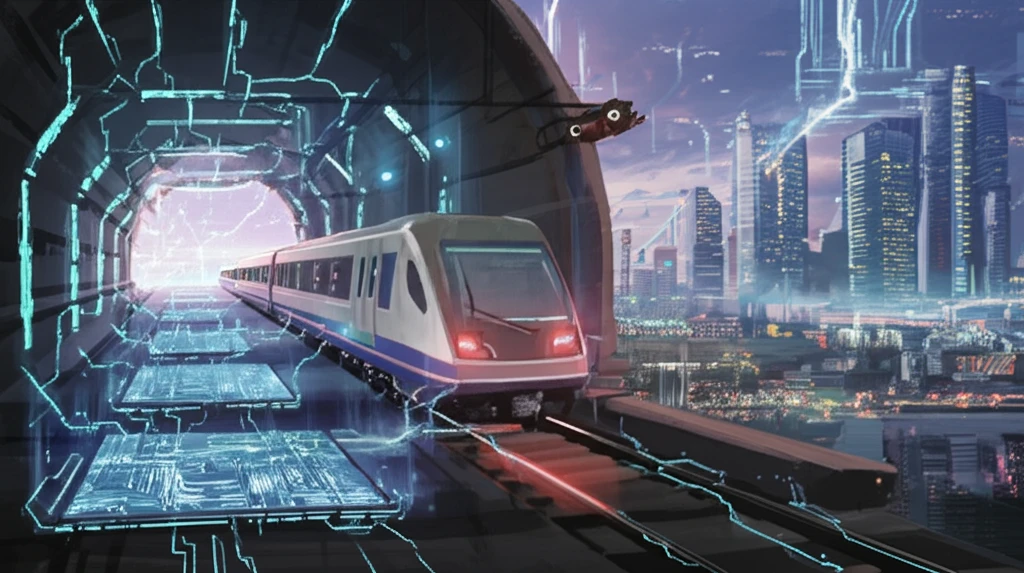
Powering the Future: How Regenerative Inverters are Revolutionizing Traction Systems
"Explore the potential of regenerative inverters in enhancing energy efficiency and sustainability in 3 kV DC traction systems."
In an era defined by climate concerns and the urgent need for sustainable practices, energy efficiency has become a paramount global issue. The reduction of greenhouse gas emissions is critical, and nowhere is this more apparent than in sectors heavily reliant on traditional energy sources. Poland, for instance, relies significantly on coal-fired power plants, making the efficient use of every unit of electricity essential. In this context, transportation systems, significant energy consumers, are under increasing pressure to adopt more sustainable technologies.
Electrified railway transport offers a promising avenue for enhancing energy efficiency, particularly through regenerative braking. This technology allows trains to convert kinetic energy back into electrical energy during braking, presenting an opportunity to reuse this energy instead of dissipating it as heat. However, the effective utilization of regenerative energy hinges on whether other trains in the same electrical section can immediately use the power. When this isn't possible, the energy is often lost through rheostat braking systems.
Enter the regenerative inverter, a technology poised to revolutionize energy management in electric traction systems. By capturing and redirecting excess regenerative energy, these inverters minimize waste and maximize efficiency. This article explores a multi-criteria optimization method for implementing regenerative inverters in 3 kV DC traction systems, examining how this approach can transform energy usage and contribute to a more sustainable transportation future.
What are Regenerative Inverters and Why Do They Matter?

Regenerative inverters aren't a new concept; thyristor converters were deployed in traction substations as early as the 1970s. However, modern advancements in power electronics, specifically IGBT transistors, have significantly enhanced their capabilities. These inverters not only facilitate the transmission of regenerative energy but also offer active filtering to compensate for current harmonics produced by diode rectifier units.
- Energy Savings: The most significant advantage is the reduction in overall energy consumption.
- Increased Redundancy: Enhances the reliability of train braking systems.
- Improved Energy Quality: Stabilizes the electrical supply.
- Reduced Tunnel Temperatures: Decreases heat buildup in underground environments.
Looking Ahead: The Future of Sustainable Traction Systems
The journey toward sustainable transportation requires innovative solutions and a commitment to optimizing existing technologies. Regenerative inverters represent a significant step forward in enhancing energy efficiency and reducing the environmental impact of electric railway systems. As research and implementation continue, these advancements promise a future where transportation is not only efficient but also environmentally responsible.
